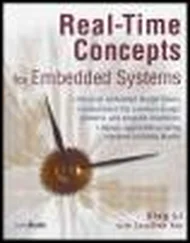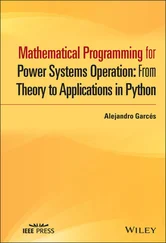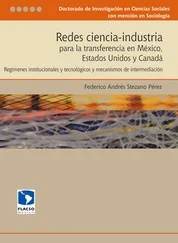Предлагаем к чтению аннотацию, описание, краткое содержание или предисловие
(зависит от того, что написал сам автор книги «Power Electronics-Enabled Autonomous Power Systems»).
Если вы не нашли необходимую информацию о книге —
напишите в комментариях, мы постараемся отыскать её.
Power systems worldwide are going through a paradigm shift from centralized generation to distributed generation. This book presents the SYNDEM (i.e., synchronized and democratized) grid architecture and its technical routes to harmonize the integration of renewable energy sources, electric vehicles, storage systems, and flexible loads, with the synchronization mechanism of synchronous machines, to enable autonomous operation of power systems, and to promote energy freedom. This is <i>a game changer for the grid. It is the sort of breakthrough – like the touch screen in smart phones – that helps to push an industry from one era to the next,</i> as reported by Keith Schneider, a New York Times correspondent since 1982. This book contains an introductory chapter and additional 24 chapters in five parts: Theoretical Framework, First-Generation VSM (virtual synchronous machines), Second-Generation VSM, Third-Generation VSM, and Case Studies. Most of the chapters include experimental results. <br /><br />As the first book of its kind for power electronics-enabled autonomous power systems, it <br /><br />• introduces a holistic architecture applicable to both large and small power systems, including aircraft power systems, ship power systems, microgrids, and supergrids <br />• provides latest research to address the unprecedented challenges faced by power systems and to enhance grid stability, reliability, security, resiliency, and sustainability <br />• demonstrates how future power systems achieve harmonious interaction, prevent local faults from cascading into wide-area blackouts, and operate autonomously with minimized cyber-attacks <br />• highlights the significance of the SYNDEM concept for power systems and beyond <br /><br /><i>Power Electronics-Enabled Autonomous Power Systems</i> is an excellent book for researchers, engineers, and students involved in energy and power systems, electrical and control engineering, and power electronics. The SYNDEM theoretical framework chapter is also suitable for policy makers, legislators, entrepreneurs, commissioners of utility commissions, energy and environmental agency staff, utility personnel, investors, consultants, and attorneys.

 ‐converter.Figure 22.7 Implementation of inverters. (a) A single‐phase inverter. (b) A ...Figure 22.8 Implementation of a DC–DC–AC converter.Figure 22.9 Implementation of a single‐phase back‐to‐back converter.Figure 22.10 Implementation of a three‐phase back‐to‐back converter.Figure 22.11 Illustrative structure of the single‐node system.Figure 22.12 Circuit of the single‐node system. (a) Wiring illustration with...Figure 22.13 Experimental results from the single‐node system equipped with ...Figure 22.14 Texas Tech SYNDEM microgrid built up with eight SYNDEM smart gr...
‐converter.Figure 22.7 Implementation of inverters. (a) A single‐phase inverter. (b) A ...Figure 22.8 Implementation of a DC–DC–AC converter.Figure 22.9 Implementation of a single‐phase back‐to‐back converter.Figure 22.10 Implementation of a three‐phase back‐to‐back converter.Figure 22.11 Illustrative structure of the single‐node system.Figure 22.12 Circuit of the single‐node system. (a) Wiring illustration with...Figure 22.13 Experimental results from the single‐node system equipped with ...Figure 22.14 Texas Tech SYNDEM microgrid built up with eight SYNDEM smart gr... ‐converter.Figure 23.3 Topology of a Beijing converter.Figure 23.5 Back‐to‐back converter formed by a
‐converter.Figure 23.3 Topology of a Beijing converter.Figure 23.5 Back‐to‐back converter formed by a  ‐converter and a conversion ...Figure 23.4 Back‐to‐back converter formed by a Beijing converter and a conve...Figure 23.6 Operation of the energy bridge to black start the SYNDEM grid. (...Figure 23.7 Integration of the solar power node. (a) Responses of the solar ...Figure 23.8 Integration of the wind power node. (a) Responses of the wind po...Figure 23.9 Performance of the wind power node when the wind speed
‐converter and a conversion ...Figure 23.4 Back‐to‐back converter formed by a Beijing converter and a conve...Figure 23.6 Operation of the energy bridge to black start the SYNDEM grid. (...Figure 23.7 Integration of the solar power node. (a) Responses of the solar ...Figure 23.8 Integration of the wind power node. (a) Responses of the wind po...Figure 23.9 Performance of the wind power node when the wind speed  changes...Figure 23.10 Integration of the DC‐load node. (a) Responses of the DC‐load V...Figure 23.11 Integration of the AC‐load node. (a) Responses of the AC‐load V...Figure 23.12 Operation of the whole testbed. (a) Responses of energy bridge ...
changes...Figure 23.10 Integration of the DC‐load node. (a) Responses of the DC‐load V...Figure 23.11 Integration of the AC‐load node. (a) Responses of the AC‐load V...Figure 23.12 Operation of the whole testbed. (a) Responses of energy bridge ...










